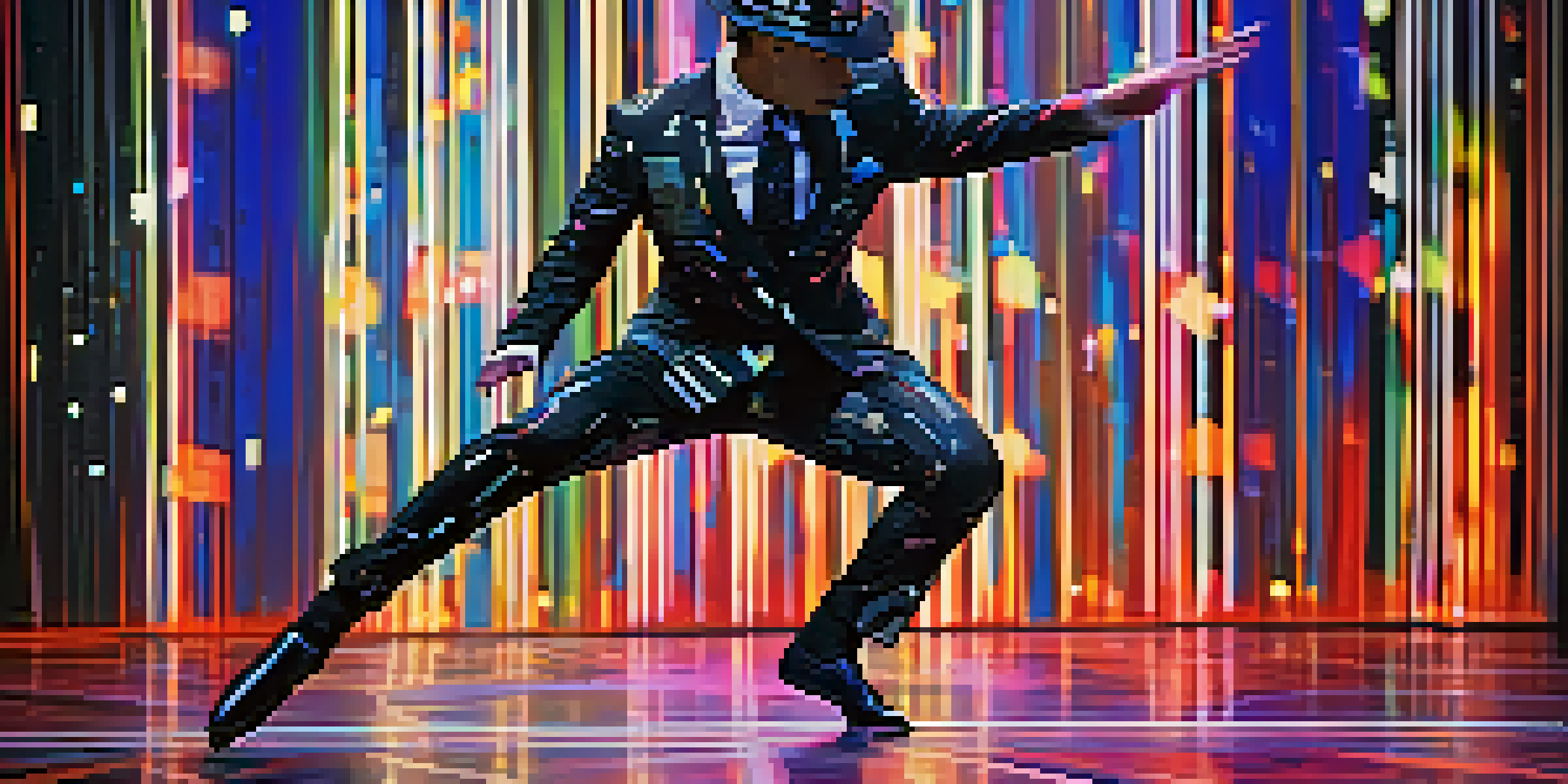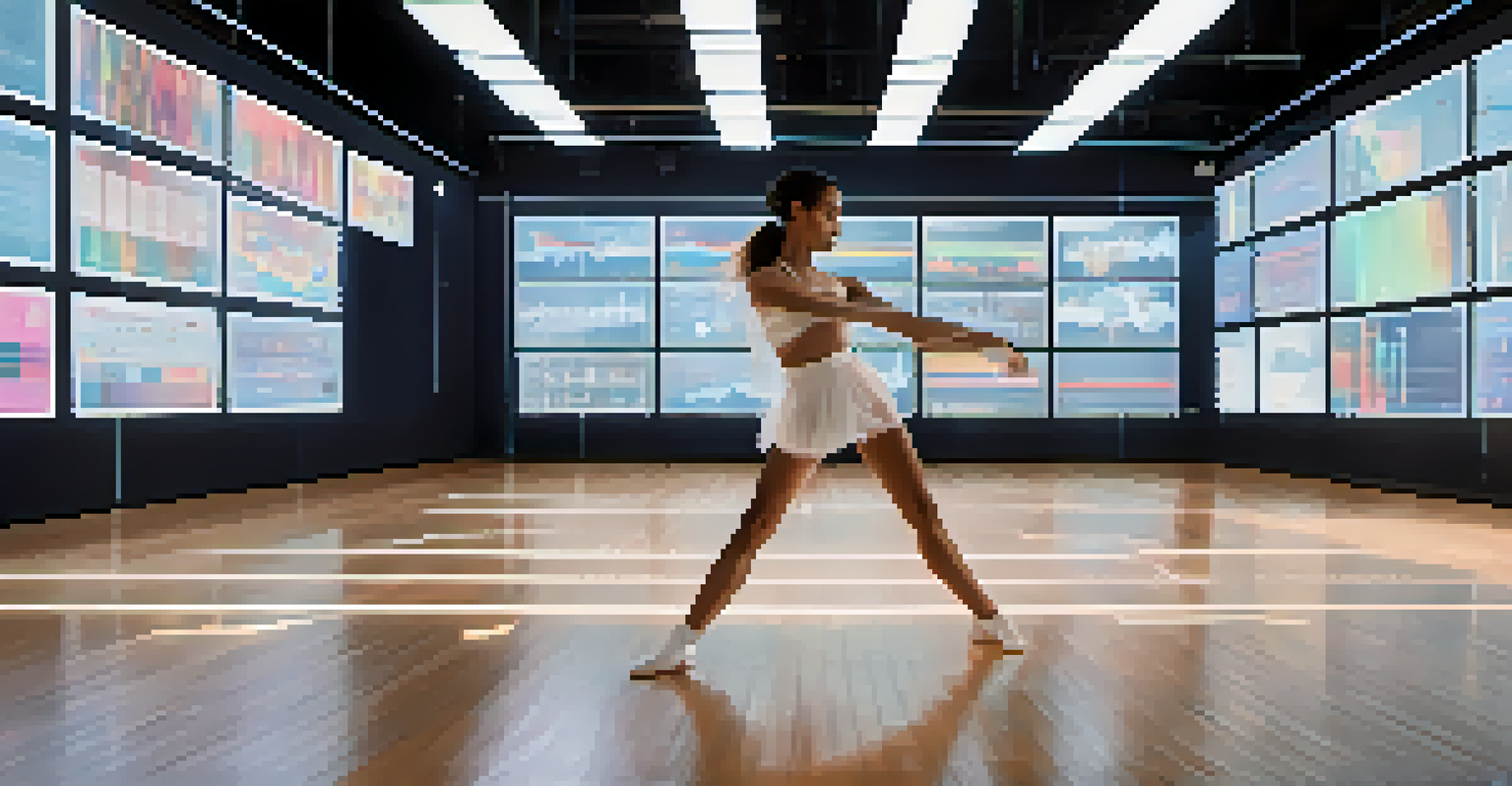Wearable Tech: Revolutionizing Movement in Dance Performances

The Rise of Wearable Technology in Dance
In recent years, wearable technology has taken the dance world by storm. From smart fabrics to motion sensors, these innovations allow dancers to push boundaries like never before. This tech not only enhances performances but also provides valuable data for choreography and training.
Technology is best when it brings people together.
Imagine a dancer wearing a suit embedded with sensors that track their movements in real-time. This data can be analyzed to improve techniques or even create new choreography based on their movement patterns. It’s like having a personal coach that’s always by your side, helping you refine your art.
As we embrace these advancements, the conversation around the fusion of technology and art continues to evolve. Dancers now have the opportunity to express themselves in unique ways, blending their physical movements with digital elements, making performances more captivating.
How Wearable Tech Enhances Performance Quality
Wearable technology enhances performance quality by providing dancers with immediate feedback. For instance, devices can measure heart rate, muscle strain, and even the force of movements, enabling dancers to adjust in the moment. This instant feedback can lead to improved endurance and technique.

Consider a dancer who regularly uses a wearable device to monitor their physical exertion during rehearsals. They can adjust their performance to prevent injuries, ensuring they are always at their best. This level of insight allows for a more disciplined and informed approach to dance.
Wearables Transform Dance Training
Wearable technology provides dancers with real-time data, enhancing their training and performance quality.
Ultimately, this technology promotes a deeper understanding of one’s body. By being aware of their physical limitations and strengths, dancers can create more powerful and nuanced performances, elevating the overall quality of their art.
Integrating Interactive Elements into Dance
One of the most exciting aspects of wearable technology is its ability to integrate interactive elements into dance performances. Dancers can activate visual projections or soundscapes through their movements, creating a multi-sensory experience for the audience. This interaction transforms a traditional performance into an immersive journey.
Art is not freedom from discipline, but disciplined freedom.
Imagine a performance where every leap and twist triggers changes in the lighting or music. This not only enhances the storytelling aspect of dance but also captivates the audience, making them feel part of the experience. It’s a wonderful blend of creativity and technology.
Such integration encourages collaboration among artists, technologists, and choreographers. By working together, they can explore new artistic frontiers, pushing the limits of what dance can represent and achieve.
The Role of Data Analytics in Dance Training
Data analytics plays a crucial role in improving dance training through wearables. By collecting and analyzing data from practice sessions, dancers can identify patterns, strengths, and areas for improvement. This level of insight helps them refine their skills more effectively.
For example, a dancer might discover that they tend to favor one side of their body during certain movements. With this knowledge, they can focus on balancing their technique, ultimately enhancing their performance. This data-driven approach creates a more targeted training regimen.
Interactive Dance Experiences Emerge
Dancers can create multi-sensory performances by integrating interactive elements through wearable tech.
Moreover, coaches can utilize this data to tailor training programs for individual dancers. With precise metrics at their disposal, they can design specific exercises that address weaknesses, fostering growth and development in a structured manner.
Creating New Choreographic Possibilities
Wearable technology opens up new avenues for choreography, allowing dancers to experiment with movement in ways previously unimaginable. Choreographers can analyze data from performances to inspire new routines, blending traditional techniques with modern insights. This fusion results in innovative and dynamic pieces that stand out.
Consider a choreographer who uses motion capture technology to visualize how a dancer’s movements interact with the surrounding space. They can create sequences that play with gravity or explore new forms of expression that resonate deeply with audiences. It’s like painting with movement, using data as the brush.
As these technologies evolve, we can expect choreography to continually adapt, offering fresh narratives and experiences. The collaboration between dancers and technology will redefine the boundaries of the art form.
Challenges and Ethical Considerations
While the benefits of wearable tech in dance are significant, they also come with challenges and ethical considerations. Data privacy is a major concern—dancers must ensure that their personal information is secure when using these devices. This is particularly important as the amount of data collected increases.
Additionally, there’s the potential for over-reliance on technology. Dancers might become too focused on data metrics and lose the instinctive, expressive qualities that make dance an art form. It's crucial to find the right balance between technology and the human element of performance.
Choreography Innovated by Data
Wearable tech offers new choreographic possibilities, allowing dancers and choreographers to experiment with movement creatively.
As the industry navigates these challenges, ongoing conversations about ethics and best practices will be vital. Dancers, choreographers, and technology developers must work together to create a framework that prioritizes both innovation and personal integrity.
The Future of Wearable Tech in Dance
Looking ahead, the future of wearable technology in dance is full of possibilities. As technology advances, we can expect even more sophisticated devices that enhance performance and creativity. Imagine wearables that not only track movement but also interpret emotions through biometric data.
This evolution could lead to entirely new forms of dance that respond to the dancer’s physical and emotional state, creating a deeply personal experience for both the performer and the audience. It’s an exciting frontier that could redefine how we perceive and engage with dance.

Ultimately, the integration of wearable tech into dance is just the beginning. As artists continue to explore this intersection, we can anticipate a vibrant evolution of the art form, filled with innovation that challenges and inspires.